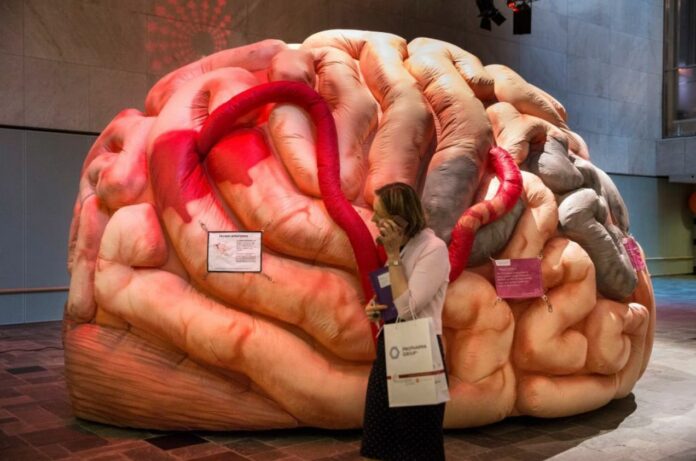A new study published today explains what drives Alzheimer’s and “why the disease predominantly affects women.”
Nearly six million individuals in the United States are living with Alzheimer’s disease, making it the most widespread form of age-related dementia. It is always fatal, and most people die of it within a decade of getting it. There is no approved treatment that can stop or even reverse the disease. Scientists have never fully understood how Alzheimer’s develops, so treatments aren’t as good as they could be. In addition, researchers have just a limited explanation of why females are disproportionately affected.
Now, researchers at Scripps Research and MIT have uncovered a potential molecular basis of Alzheimer’s disease, which may also shed light on why women are at a higher risk of developing the condition.
The study, which was published today in Science Advances, found that the brains of women who died from the disease had significantly higher concentrations of a chemically modified form of an inflammatory immune protein called complement C3 than those of men who died from the same cause. They also demonstrated that estrogen, the synthesis of which decreases after menopause, generally acts as a barrier that prevents the formation of this particular type of complement C3.
As explained by the senior author Stuart Lipton, the findings of the study “suggest that chemical modification of a component of the complement system helps drive Alzheimer’s, and may explain, at least in part, why the disease predominantly affects women.”
A team lead by Steven Tannenbaum, PhD, Post Tenure Underwood-Prescott Professor of Biological Engineering, Chemistry, and Toxicology at MIT, collaborated on the project.
Alzheimer’s disease, the most prevalent type of dementia associated with aging, now affects over six million individuals in the United States alone. It is always fatal, and most people die of it within a decade of getting it. There is no approved treatment that can stop or even reverse the disease. The medicines’ limitations are a reflection of the reality that researchers still don’t completely understand how Alzheimer’s disease develops. In addition, researchers do not completely understand why women make up approximately two-thirds of all reported cases.
Lipton’s lab looks at biochemical and molecular processes that may be behind neurodegenerative diseases, such as the chemical reaction that makes a changed type of complement C3 (called protein S-nitrosylation). This chemical process, which produces a modified “SNO-protein” when a nitric oxide (NO)-related molecule attaches securely to a sulfur atom (S) on a specific amino acid building-block of proteins, was first found by Lipton and his colleagues. Small clusters of atoms, like NO, often modify proteins in cells. These alterations generally activate or inactivate a target protein’s activities. Because of technical difficulties, S-nitrosylation has received less attention than other protein modifications, but Lipton hypothesizes that “SNO-storms” of these proteins may play a significant role in the development of Alzheimer’s disease and other neurodegenerative diseases.
The current study quantified proteins that had been changed in the brains of 40 humans after death by using unique techniques for identifying S-nitrosylation. The brains were split 50/50 between those who had died from Alzheimer’s and those who had not, with both sexes represented.
In these brains, scientists discovered 1,449 distinct S-nitrosylated proteins. Among the most frequently changed proteins, some have previously been linked to Alzheimer’s disease, including complement C3. Surprisingly, female Alzheimer’s brains had levels of S-nitrosylated C3 (SNO-C3) that were more than six times greater than those of male Alzheimer’s brains.
The complement system is an older component of the human immune system. The “complement cascade” is made up of a family of proteins, including C3, that may activate one another to cause inflammation. For more than 30 years, researchers have known that, as compared to neurologically healthy brains, Alzheimer’s brains exhibit greater amounts of complement proteins and other inflammatory indicators. More recent research has demonstrated that complement proteins may cause brain-resident immune cells known as microglia to disrupt synapses, which are the locations at which neurons transfer impulses to one another. Loss of synapses has been shown to be a substantial correlate of cognitive decline in Alzheimer’s brains, and many researchers now speculate that this synapse-destroying mechanism at least partially explains the Alzheimer’s disease process.
Why is SNO-C3 more likely to be found in the brains of women with Alzheimer’s? The female hormone estrogen has long been shown to have brain-protective effects under certain situations; consequently, the researchers reasoned that estrogen particularly shields women’s brains against C3 S-nitrosylation—and that this protection is lost when estrogen levels decrease drastically with menopause. Experiments with human brain cells grown in a lab-confirmed this theory by showing that SNO-C3 levels go up when estrogen (-estradiol) levels go down. This is because a brain cell enzyme that makes NO is turned on. Synapses are destroyed by microglia when SNO-C3 levels rise.
“Why women are more likely to get Alzheimer’s has long been a mystery, but I think our results represent an important piece of the puzzle that mechanistically explains the increased vulnerability of women as they age,” Lipton adds.
Now, he and his team want to test whether or not drugs that de-nitrosylate (that is, remove the SNO alteration) may mitigate Alzheimer’s disease pathogenesis in animal models and, ultimately, people.
Source: 10.1126/sciadv.ade0764
Image Credit: Michel Porro/Getty Images
